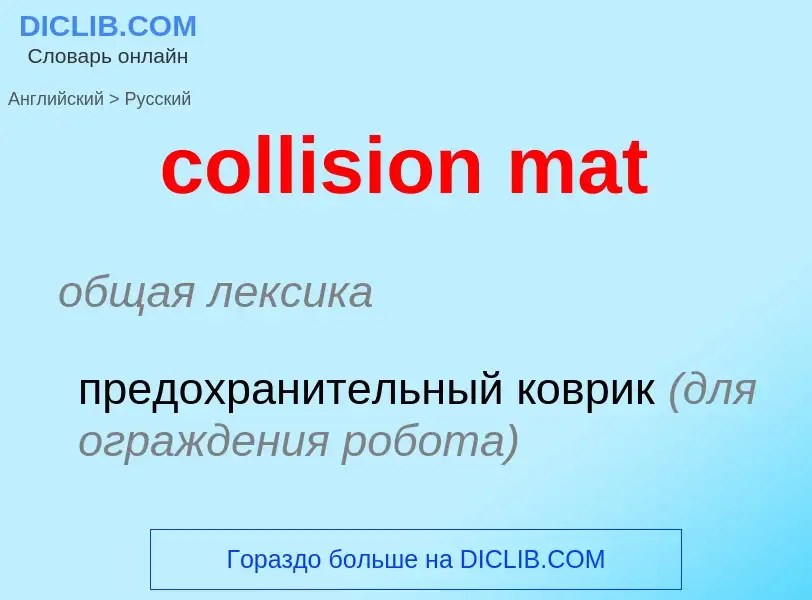Übersetzung und Analyse von Wörtern durch künstliche Intelligenz ChatGPT
Auf dieser Seite erhalten Sie eine detaillierte Analyse eines Wortes oder einer Phrase mithilfe der besten heute verfügbaren Technologie der künstlichen Intelligenz:
- wie das Wort verwendet wird
- Häufigkeit der Nutzung
- es wird häufiger in mündlicher oder schriftlicher Rede verwendet
- Wortübersetzungsoptionen
- Anwendungsbeispiele (mehrere Phrasen mit Übersetzung)
- Etymologie
collision mat - Übersetzung nach russisch
общая лексика
предохранительный коврик (для ограждения робота)
существительное
общая лексика
магистр педагогики
синоним
Definition
Wikipedia
In cryptography, collision resistance is a property of cryptographic hash functions: a hash function H is collision-resistant if it is hard to find two inputs that hash to the same output; that is, two inputs a and b where a ≠ b but H(a) = H(b).: 136 The pigeonhole principle means that any hash function with more inputs than outputs will necessarily have such collisions;: 136 the harder they are to find, the more cryptographically secure the hash function is.
The "birthday paradox" places an upper bound on collision resistance: if a hash function produces N bits of output, an attacker who computes only 2N/2 (or ) hash operations on random input is likely to find two matching outputs. If there is an easier method to do this than brute-force attack, it is typically considered a flaw in the hash function.
Cryptographic hash functions are usually designed to be collision resistant. However, many hash functions that were once thought to be collision resistant were later broken. MD5 and SHA-1 in particular both have published techniques more efficient than brute force for finding collisions. However, some hash functions have a proof that finding collisions is at least as difficult as some hard mathematical problem (such as integer factorization or discrete logarithm). Those functions are called provably secure.


![Flat mat with a painting of a [[Paris]] street Flat mat with a painting of a [[Paris]] street](https://commons.wikimedia.org/wiki/Special:FilePath/Paillasson Paris.jpg?width=200)

